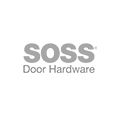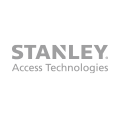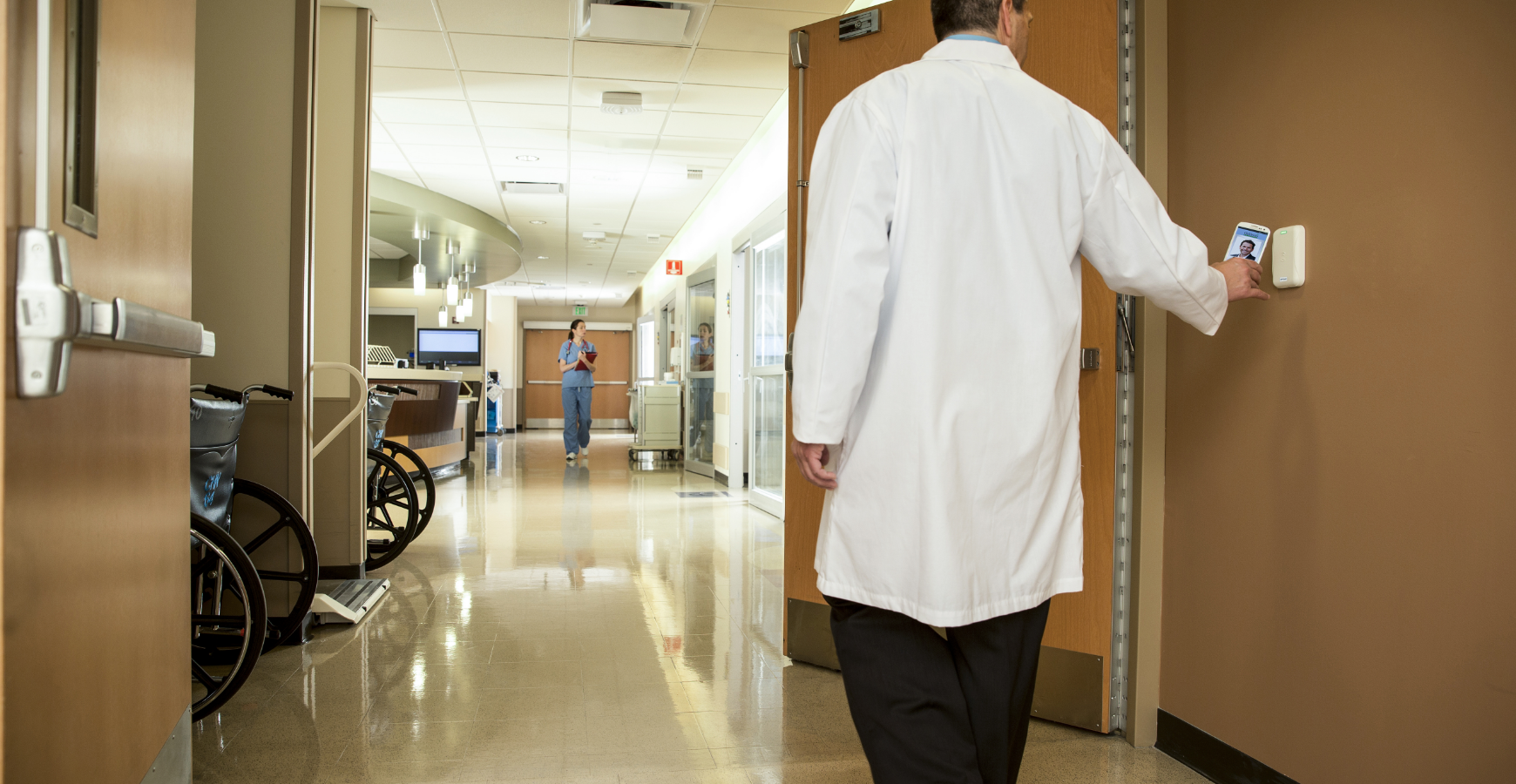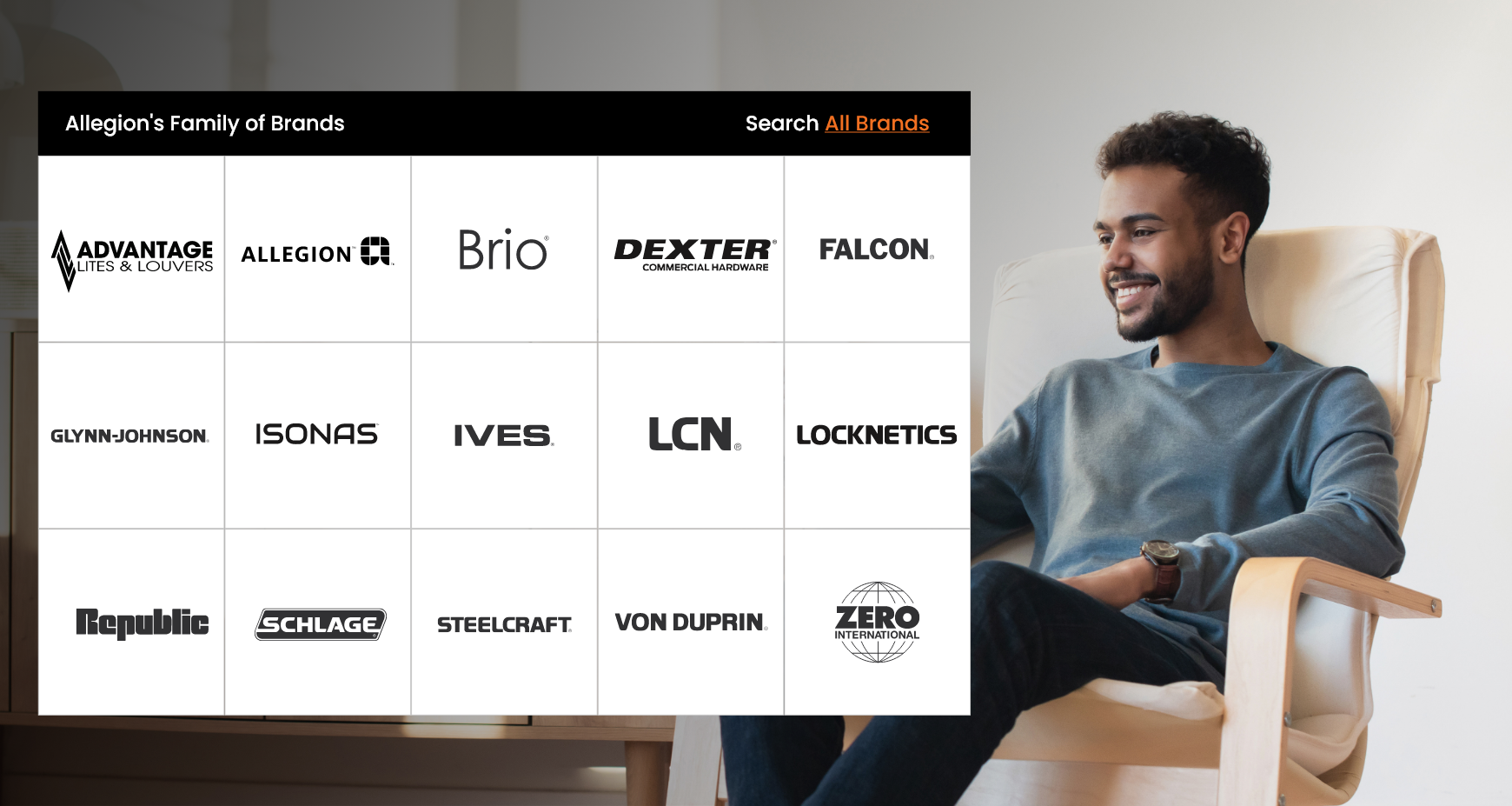Reopen your facilities using a hands-off approach to access control. Here are three healthier door hardware solutions to consider.
There were rules about masking-up. Vaccination mandates. Testing protocols. Just as it seemed like our routines were normalizing, a rise in breakthrough infections and the delta variant of the coronavirus forced facilities to refresh their reopening plans. Once again, they were forced to find new ways to keep indoor spaces safe and healthy.
Following a dip in August, it appears that occupancy rates are again picking up. So now the question becomes, how do we keep employees at their desks and students in classrooms with limited risk of infection?
Many companies are taking a hybrid approach to combat both airborne and surface transmission, in addition to testing, vaccination recommendations and contact tracing. Air filtration systems and mask rules are in place at some offices, schools and other facilities to prevent the airborne spread of the coronavirus. To limit interaction with high-touch surfaces, I’ve heard of everything from removing water coolers and coffee machines, adding hand sanitizer throughout the building and installing new door hardware for hands-free or touchless access.
If you’re exploring touchless door hardware solutions, Allegion is here to help.
Touchless solutions for healthier buildings
Most participants in a focus group conducted by Allegion said door hardware and access control were top priorities in their facilities as they addressed pandemic-related concerns. This comes as no surprise as COVID-19 has caused people to reevaluate their daily routines with health and well-being top of mind. Two popular ways to cater to today’s no-touch mindset are automatic door operators and hands-free door pulls.
Most participants in a focus group conducted by Allegion said door hardware and access control were top priorities in their facilities as they addressed pandemic-related concerns.
Remember, it’s not just the main entrances that should be contactless.
Have you considered going touchless in a space where nobody ever wants to touch anything: the bathroom? From the toilet to the sink to the soap, then the towels, it’s all automated. Yet you must touch the door to enter and exit.
Shared spaces on campus or in a multifamily property are frequented throughout the day. Without always-on cleaning crews, a more hygienic door hardware solution might be best. The same is true for schools, where germs will always be a big concern.
It’s not a one-size-fits-all solution. Touchless access using an automatic door operator can eliminate the need to contact the door, but it’s not feasible at every opening. Consider the traffic at the door and hardware that is already on or around it. You also want to reference the applicable building codes.
Doors that experience a low amount of traffic might simply need cleaned and disinfected more frequently, whereas high-traffic doors would benefit from a traditional automatic door operator. Then there are the openings in the middle that have people passing through at a greater rate than the cleaning crew’s capacity. Hands-free door pulls, door hardware with antimicrobial copper and a low-cost automatic door operator are good solutions.
Not sure where to start? Here are 12 examples of openings that could benefit from touchless solutions or hands-free door hardware:
- Public restrooms
- Classrooms
- Large gathering areas, arenas, auditoriums
- Common areas in residence halls and multifamily and mixed-use buildings, such as main rooms, gyms, lounges and dining rooms
- Staff lounges
- Storage rooms
- Patient and exam rooms
- Waiting rooms
- Cafeterias
- Private offices and meeting rooms
- Public areas in government buildings
- Offices










































